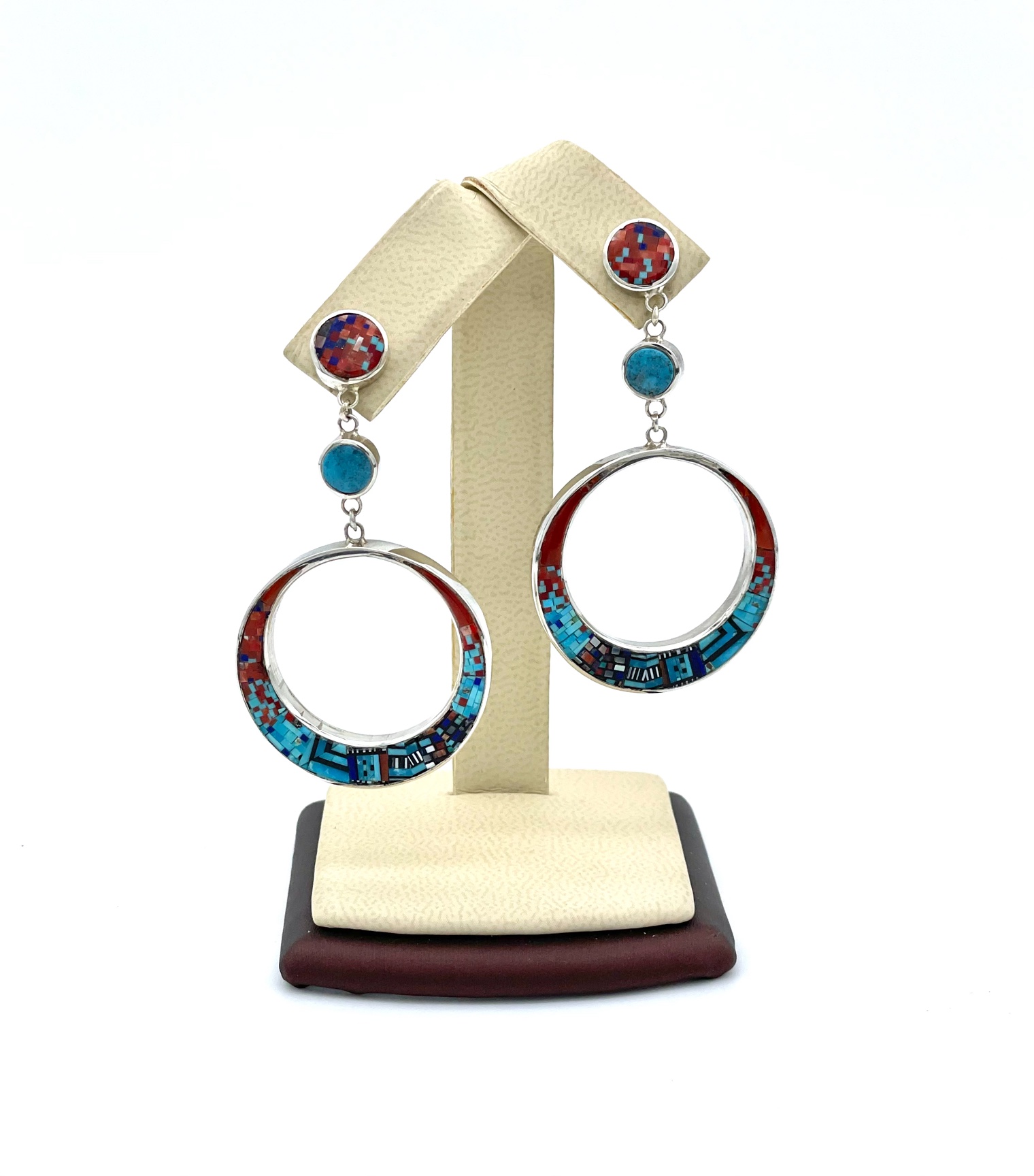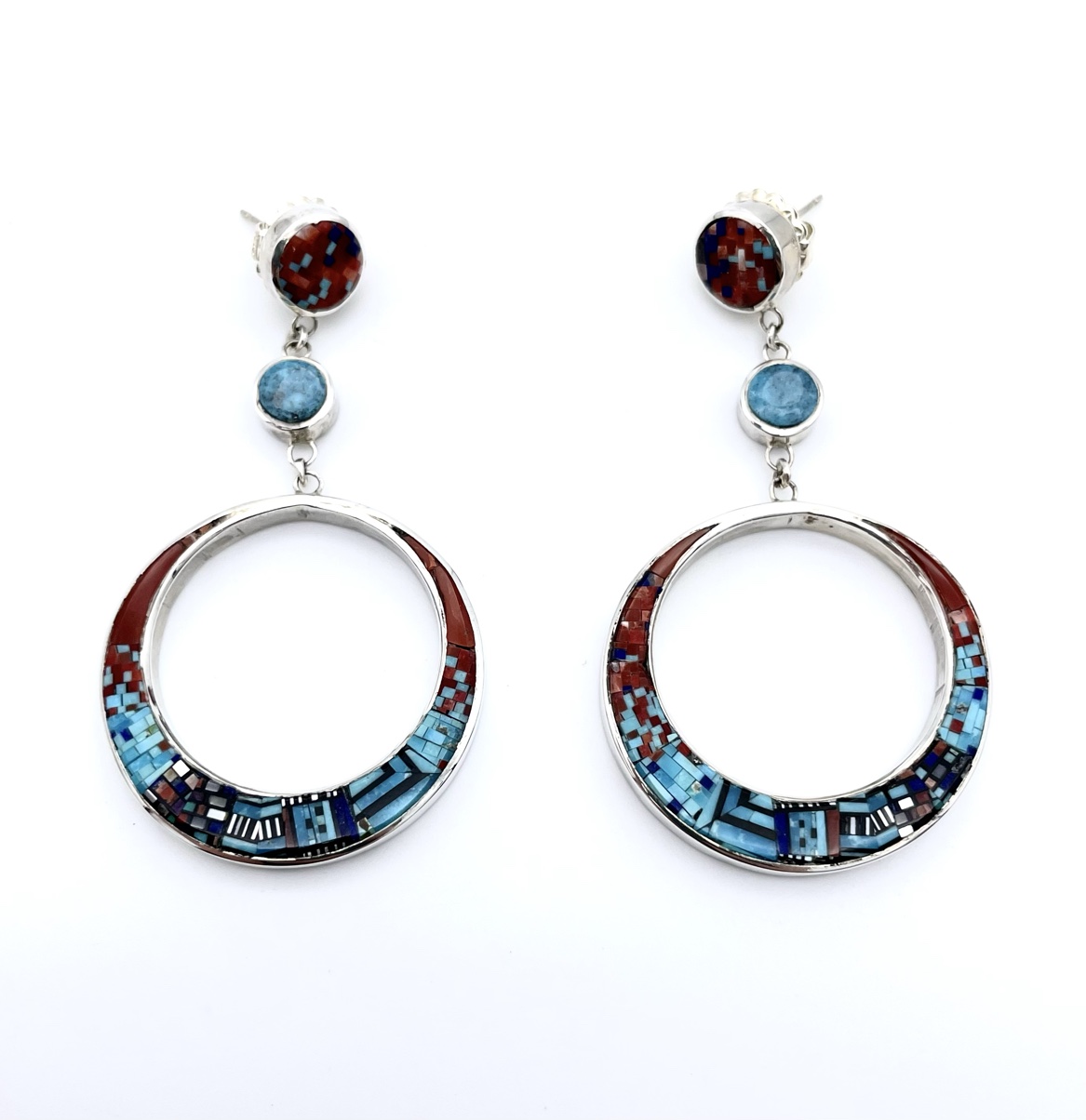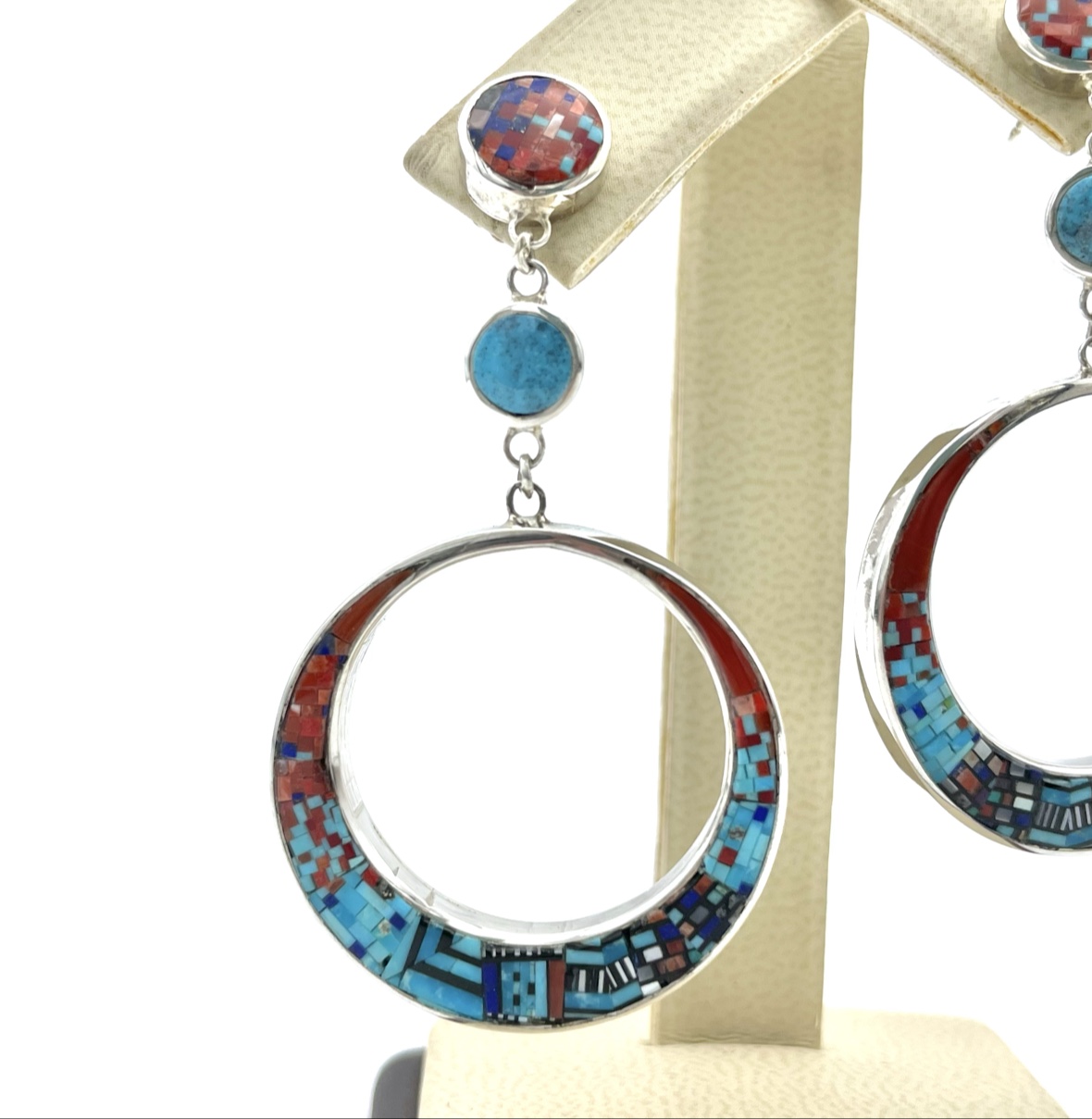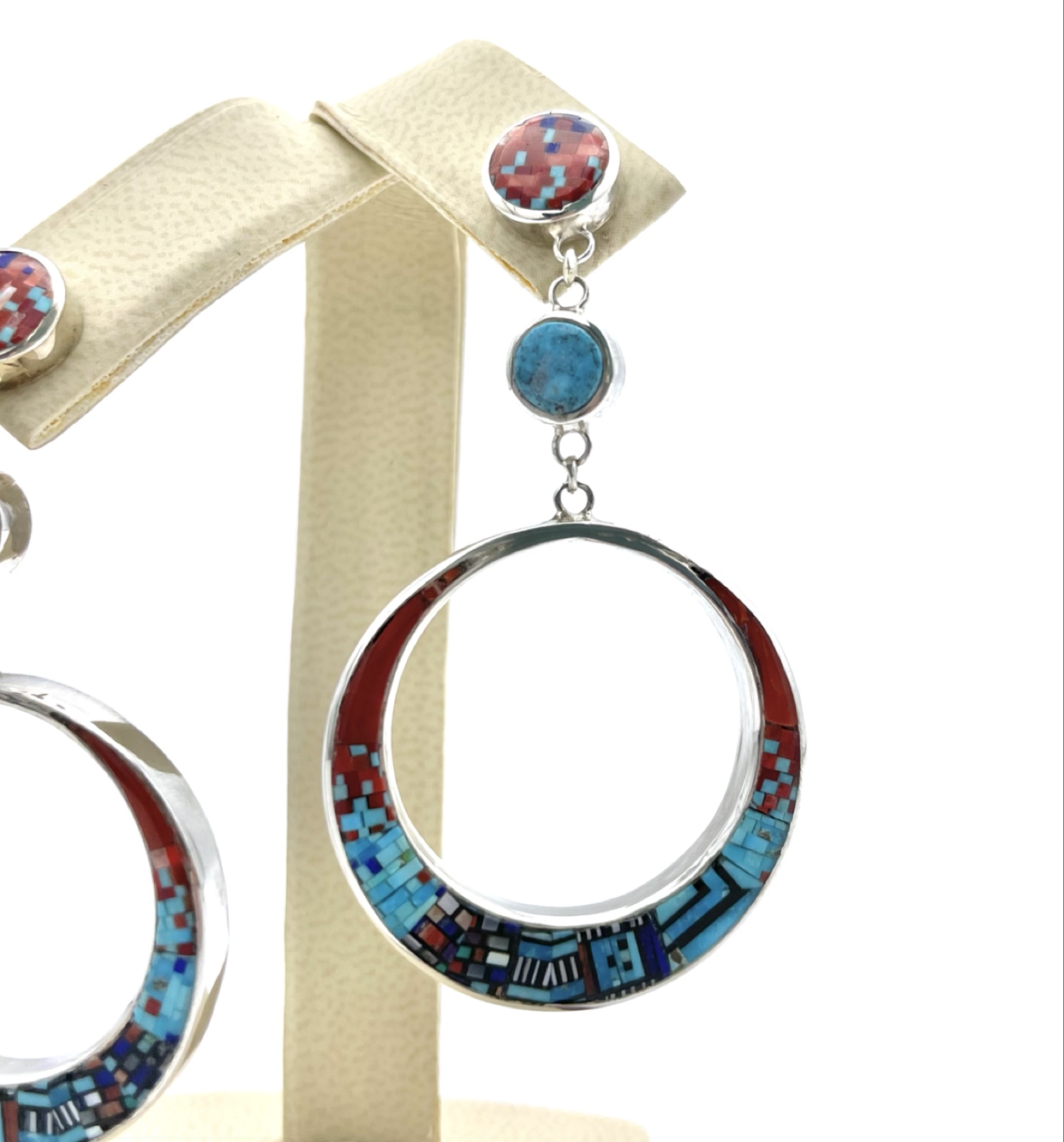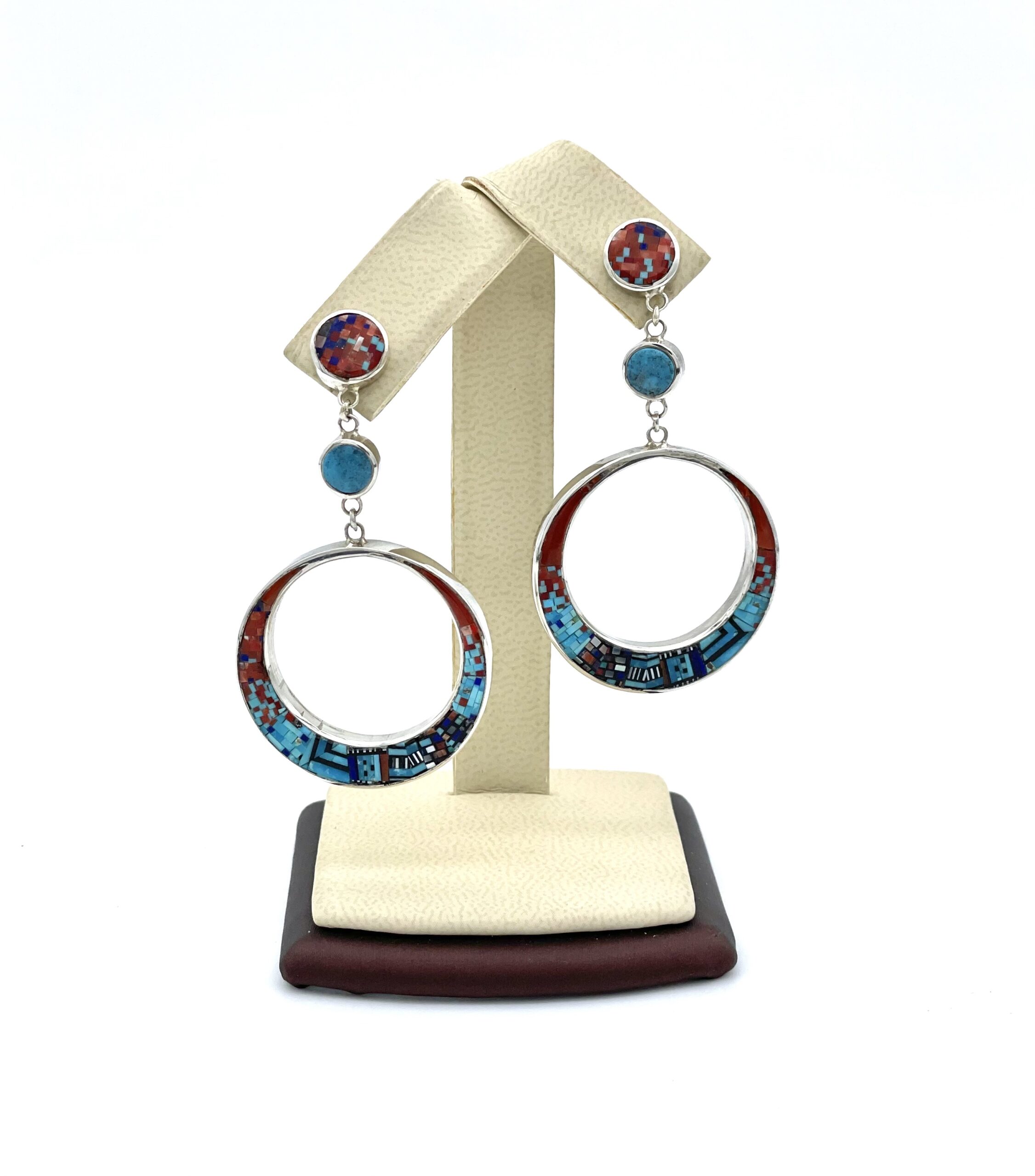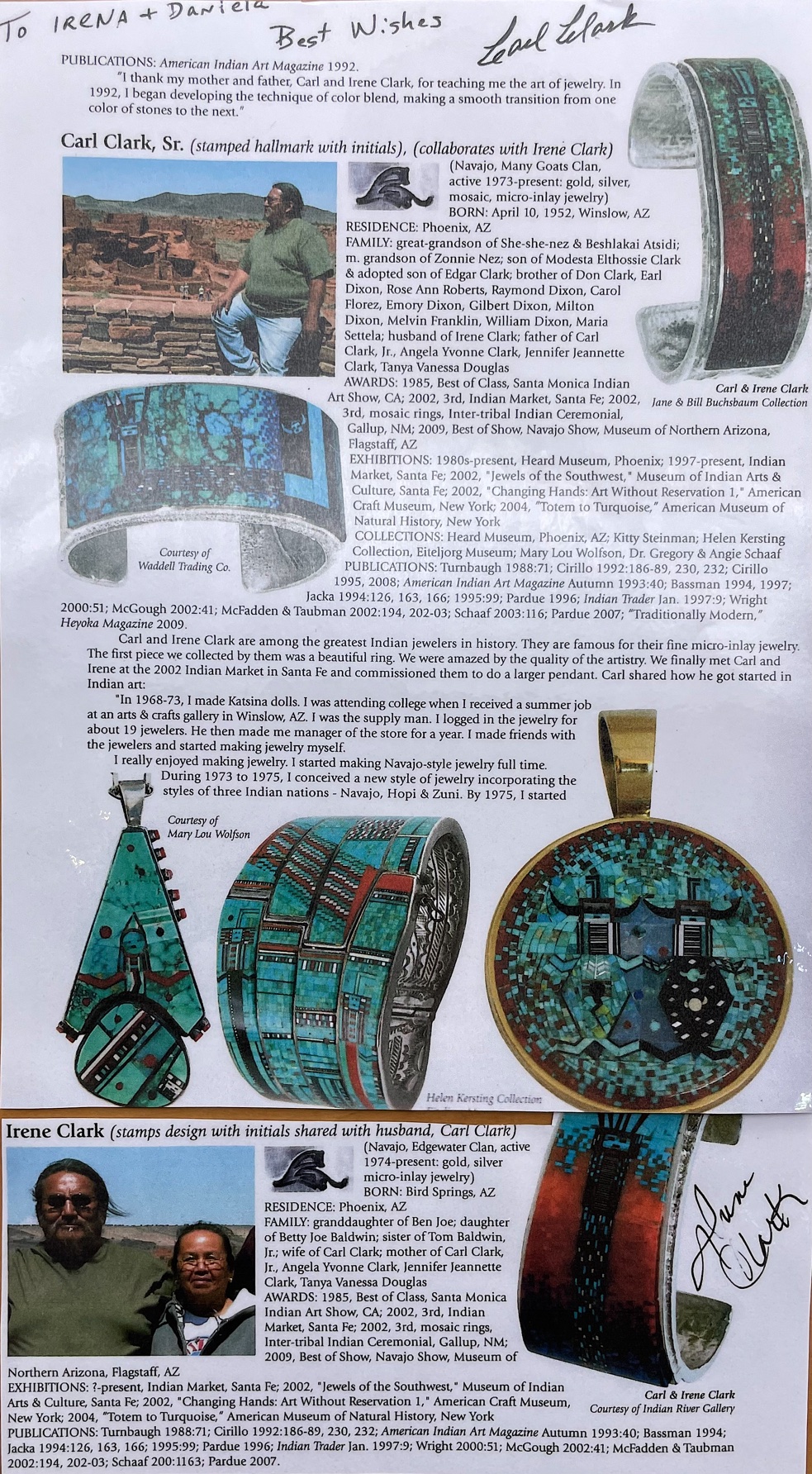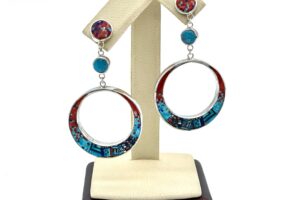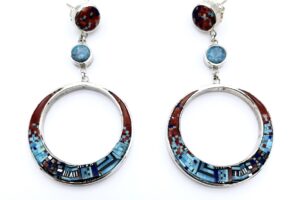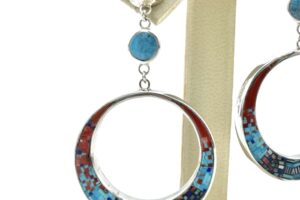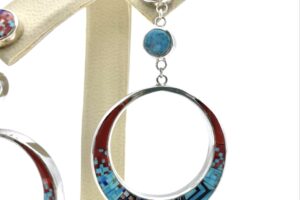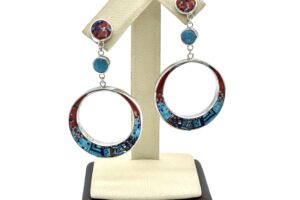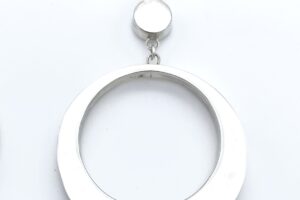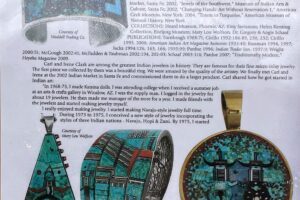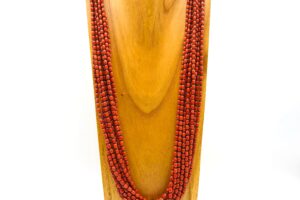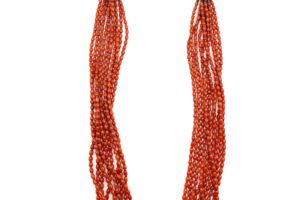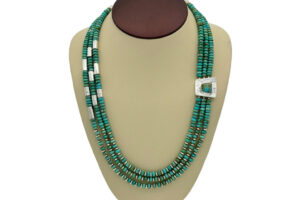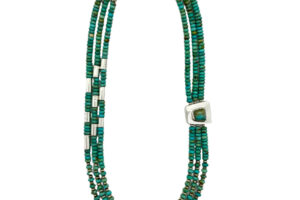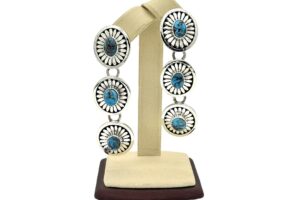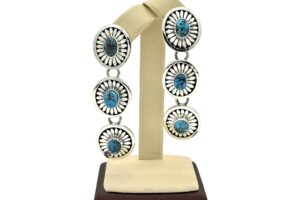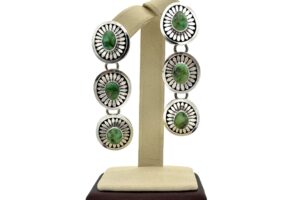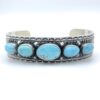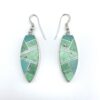Micro Inlay Earrings
Navajo Artist Carl and Irene Clark
$5,289.99
1 in stock
- Solid Sterling Silver, Micro-Inlay Work, Earrings
- Inlay Stones: Turquoise, Coral, Lapis Lazuli, Mother of Pearl
- Dimension: 1.25″ Wide, 2.25″ long, each earring
- Hallmark Carl and Irene Clark Signture hallmark, Sterling
- Tribe: Navajo/Diné
Carl was born in Winslow, Arizona, April 10, 1952 and is from the Manygoat/Redhouse Clan related to Bitterwater. Irene was born in Bird Springs, AZ, and is from the Edgewater Clan and related to Towering People. Clans are very important that tell where family comes from the last thousand years.
Carl and Irene are part of large families that nourish art with weavers, carvers, painters and jewelry artists. Carl was self-taught in 1973 and then taught Irene in 1974. They then taught their late son, Carl Jr., as well. Carl is self taught creating jewelry by trial and error. However, Carl has a great uncle, Peshlakai Atsidi (White Metal Maker) of Wupatki, Arizona. He was one of the first silversmiths from Western Navajo Nation in the 1870s. But Carl had no predecessor that taught him.
Carl and Irene experimented with Navajo style, Hopi overlay and Zuni inlay. The inlaying progressed from fine, to finer and then to where it is today, micro-fine inlay. There was no category for his inlay jewelry when they first entered into art show competitions. So, they named their jewelry micro-fine intarsia. Since then, they have won numerous ribbon awards, best of craftsman, best of fashion as well as best of show. Their jewelry is featured in 20 books.
Carl and Irene collaborate on the same pieces of jewelry. Irene designs and smiths the dainty rings, earrings and necklaces. Carl designs and makes the manly bolos and buckles. They both share the inlay work.
Carl had higher education in civil and mechanical engineering. So therefore, both Carl and Irene first use the planning layout to draft and illustrate their jewelry. But sometimes they just impromptu their work without layout.
Their passion is creating wearable and fashionable jewelry art regardless of time and labor involved. They view the stone inlay as a picture and the metal work as a picture frame.
They honed in their silver-smithing by assembly technique eliminating any time lapse because of the extreme amount of time creating their jewelry. At the same time, they researched the art of jewelry at the Phoenix Library. That was their gateway to the world of jewelry art. Nowadays, it’s at the fingertips of a cell phone.
Five years in the midst of their micro-fine stone inlay jewelry, they came across a counterpart master jeweler. His name was Fortunato Pio Castellani of the 1850s. He created micro-fine mosaic jewelry. He melted vibrant colored glass into hairline canes and pieced together mosaic pictures in jewelry. What Castellani could do in three weeks takes Carl and Irene three years to do in stone.
Carl and Irene started making the Rainbow Man motif. Rainbow Man is the protection symbol in sandpaintings. Therefore, they make jewelry of protection. Because of demand for the Yei figure, it has become the mainstay of inlay design.
Their progression in inlay techniques are the blend of stone colors and the curvature technique that creates swirls like the Van Gogh’s Swirly Starry Night.

